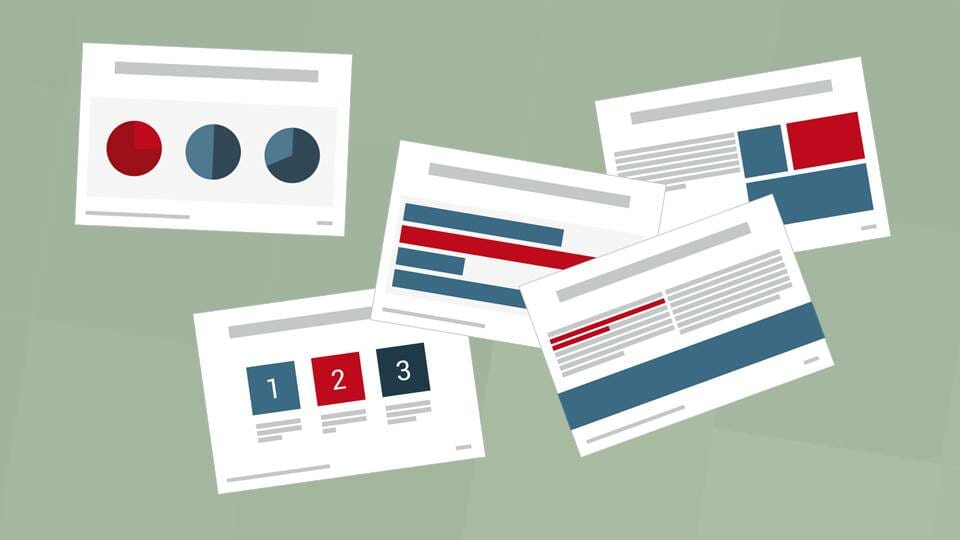
25 Tips for an Appealing Presentation Design – Part 1
In recent weeks, we have put together 25 tips on how to Skillfully Design Presentation Content. In this blog series, we will devote ourselves to presentation design. With our design do’s and don’ts, you can create visually stunning templates that appeal to your audience.
1. Create clean slides.
The concept of “less is more” is an essential component of virtually any design philosophy. This is especially true when designing presentations, which have limited space. The use of fewer design elements helps convey statements more clearly and brings the important points to focus. Simplicity has many facets, such as a small color palette or a few choice photos.
2. Tailor your design to your target audience.
Get as much information as you can about your audience in advance including age, occupation, hobbies, etc. All this is important data that will help you tailor the design and content of your slides. Dig into the specific interests and needs of your target audience and match your image selection, language, etc. accordingly.
3. Use high resolution pictures.
High-quality, high-resolution photos, combined with a crisp sentence or word, can make your slides an eye-catchers. Make sure that the text color you select matches the colors on the image and that it is legible in the photograph. Don’t use pixelated motives unless this is you’re the style element or theme in your presentation. However, keep in mind that these images are hard to see and your templates may appear unprofessional.
4. Stock Photo Do’s.
If you choose to design a presentation with stock photos, make sure they are not the typical cheesy shots associated with stock photos. The photos should convey a natural impression related to your statement, and support your text and fit your layout. Ideally, the viewer will notice that you have selected these specific photos for your presentation because they enhance and better communicate your content.
5. Stock Photos Don’ts.
Avoid stock photos with people in unnatural poses. For example, photographs in which people are looking directly into the camera or have a forced smile. Also, take the time to experiment with cropping and editing your picture before you insert it into your presentation. This will make it easier for you later!
6. Pay attention to the file size of videos and pictures.
You should always try to choose the best quality and highest resolution pictures, graphics and videos for your presentation. But watch out for the file size! If you play your PowerPoint presentation on an unknown device, the large amount of high quality videos and pictures could crash your presentation. In this case, keep it simple and ask yourself whether your presentation really needs this video or whether you yourself can explain the concepts better.
7. Avoid visual clichés.
It can be difficult to combine complicated content with pictures in a presentation. This is usually why we fall back on visual clichés such as pictures of handshakes or someone on a headset with a fake smile. Instead, don’t be afraid to be creative and consider using metaphors when designing your slides. Think abstractly and use the power of symbolism. For instance, when talking about the “view or vision” show a lighthouse.
8. Use a mood board.
Do you need a little design inspiration? Try experimenting with a mood board. Place different visual inspirations on it – collect newspaper clippings, screenshots, examples from other presentations, and any other elements you can think of. Looking at your whole collection of visuals side by side, will help you get an overall idea of possible design styles.
The next topic is about the right color scheme as well as the presentation of established design methods. Read Part 2.




